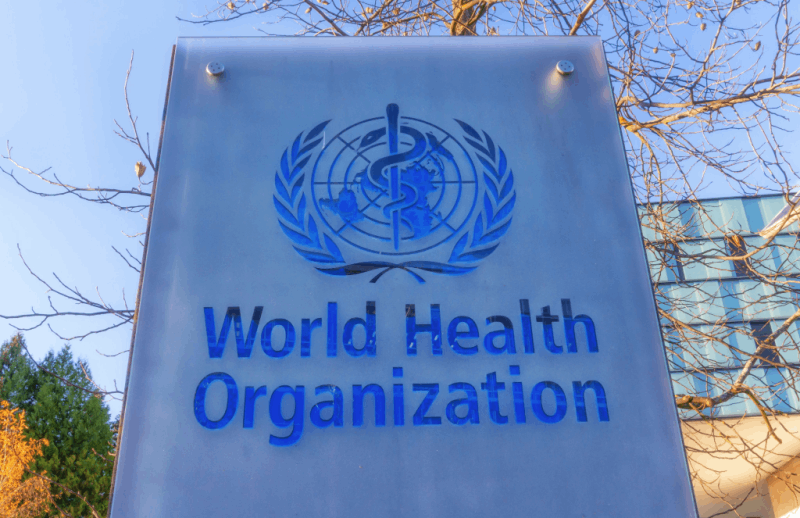World Health Organization Collaborating Centres

World Health Organization (WHO) Collaborating Centres
These institutions such as research institutes, parts of universities or academies, are designated by the Director-General to carry out activities in support of the Organization’s programmes.
Over 800 WHO collaborating centres in over 80 Member States are working with WHO on areas such as nursing, occupational health, communicable diseases, nutrition, mental health, chronic diseases, and health technologies.
The Melbourne Children’s Campus is home to four collaborating centres, each focused on a different aspect of child and adolescent health.
These institutions such as research institutes, parts of universities or academies, are designated by the Director-General to carry out activities in support of the Organization’s programmes.
Over 800 WHO collaborating centres in over 80 Member...
These institutions such as research institutes, parts of universities or academies, are designated by the Director-General to carry out activities in support of the Organization’s programmes.
Over 800 WHO collaborating centres in over 80 Member States are working with WHO on areas such as nursing, occupational health, communicable diseases, nutrition, mental health, chronic diseases, and health technologies.
The Melbourne Children’s Campus is home to four collaborating centres, each focused on a different aspect of child and adolescent health.
WHO Collaborating Centre for Research and Training in Child and Neonatal Health
The Centre's core aims are to address the inequity in global child mortality, assist countries to achieve their Sustainable Development Goals in child health, and develop strong child health systems. The team of experts within the centre are involved in basic, field, and clinical research, epidemiology, child health policy, training, and education.
Our fields of research encompass a wide range of conditions affecting children, including vaccine-preventable diseases, pneumonia, tuberculosis, neonatal conditions, Group A streptococcus and related diseases such as scabies, impetigo, and rheumatic heart disease. We work on strengthening health systems, improving the quality of care for children and newborns, health education, and improving equity.
We have supported the WHO in the development and implementation of Hospital Care for Children: a set of guidelines and a program of quality improvement designed for the health care of children at first-referral level health facilities, as well as other clinical and public health evidence-based guidelines.
Our researchers provide advice, leadership, training, and advocacy as members of various international and national health organisations, committees, and advisory bodies.
WHO Collaborating Centre for Adolescent Health
Provision of technical advice on adolescent health to WHO, including headquarters, regions, and countries. The team:
- Provide technical assistance in support of technical advocacy materials related to the health sector's role in adolescent health
- Provide technical assistance on the establishment of a WHO short list of health indicators on adolescent health and the development of new indicators
- Contribute to the strengthening of systems that support global data collection and analysis (at global and national levels)
- Contribute to the development by the Department of MCA of WHO guidelines on improving health services for adolescents
- Contribute to the development by the Department of MCA of an adolescent health research agenda.
Chair of the 2013 WHO committee on global indicators for adolescent health
- Member – WHO-UNICEF - Helping Adolescents Thrive (HAT) initiative
- Member – Advisory Group for the Accelerating Action for Adolescent Health, the Global AA-HA!
WHO Collaborating Centre for Child Health
The WHO Collaborating Centre for Child Health continues to make a major contribution in the standardisation of detection and characterisation of rotavirus by providing expert advice and guidance to laboratories and scientists on methods, quality systems and troubleshooting problems as they arise.
The Centre has provided significant input into the revision of the WHO Surveillance Network Training manual detailing the methodology for the G & P genotype characterisation of rotaviruses in this document for distribution and use in participating countries.
The Centre has also continued to evaluate the G & P genotype methodology, with the aim to refine the assays. Ongoing evaluation of alternative buffers, primers and other reagents continues to be undertaken to improve the assays.
Members of the Melbourne WHO Collaborating Centre have attended regular meetings of the WHO Technical Working Group for Rotavirus Surveillance.
WHO Collaborating Centre for Scabies Control
The members of the Centre assist WHO to:
- Develop improved estimates of the burden of scabies worldwide
- Provide WHO with expert interpretation of new data on field diagnostics for scabies control programmes
- Develop training materials to support WHO-endorsed scabies control programme activities
- Advocate for increased country access to medications required to achieve WHO scabies control targets
The centre has been involved in developing products including guidelines, manuals, and methodologies among other products. The Centre is involved in disseminating information in communities and organising events such as conferences and summits.
These WHOCCs are part of the Australian WHOCC Network chaired by Professor Susan Sawyer and hosted at the Australian Global Health Alliance. The WHOCC Network intends to build effective partnerships domestically and in the region towards a coordinated and strategic approach to the WHOCCs in Australia.
